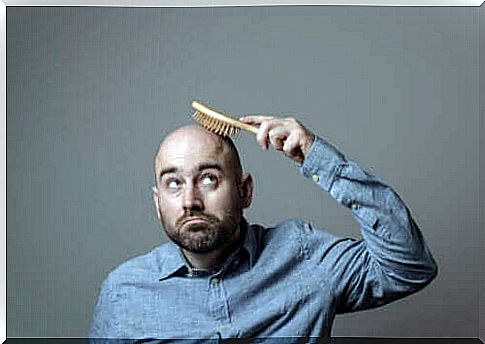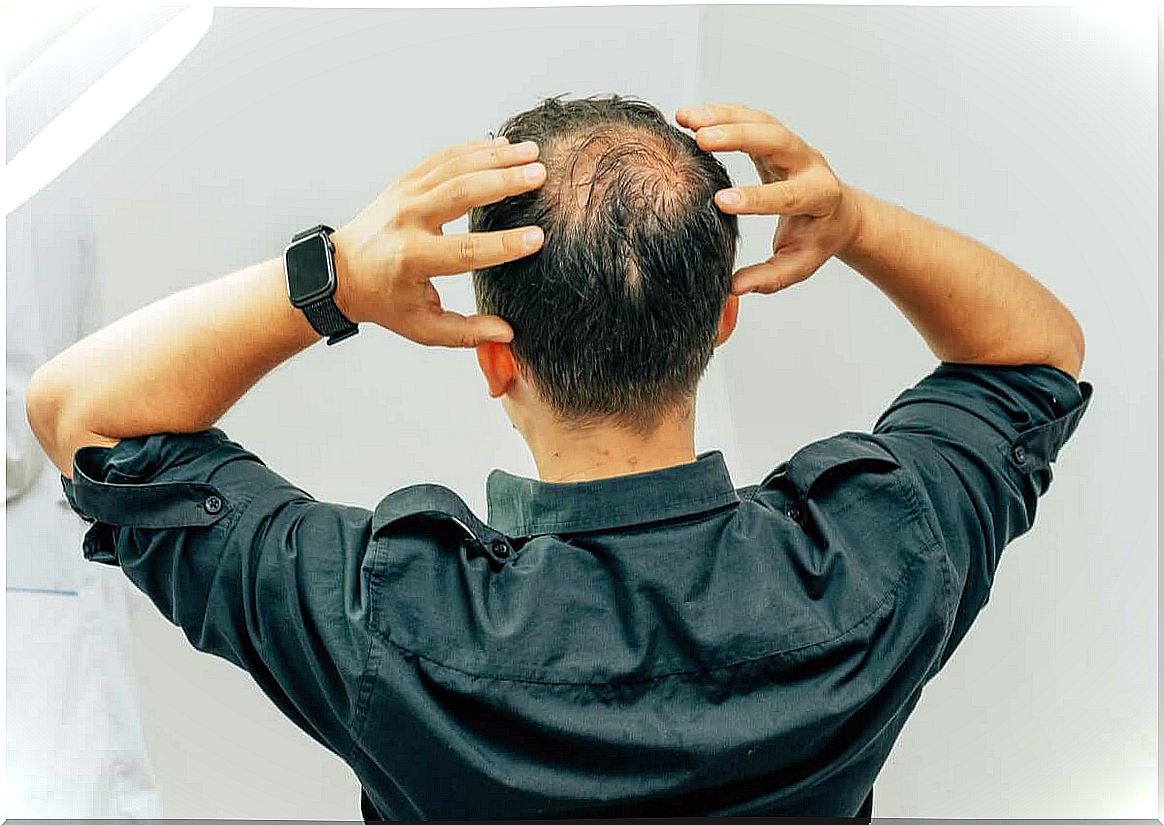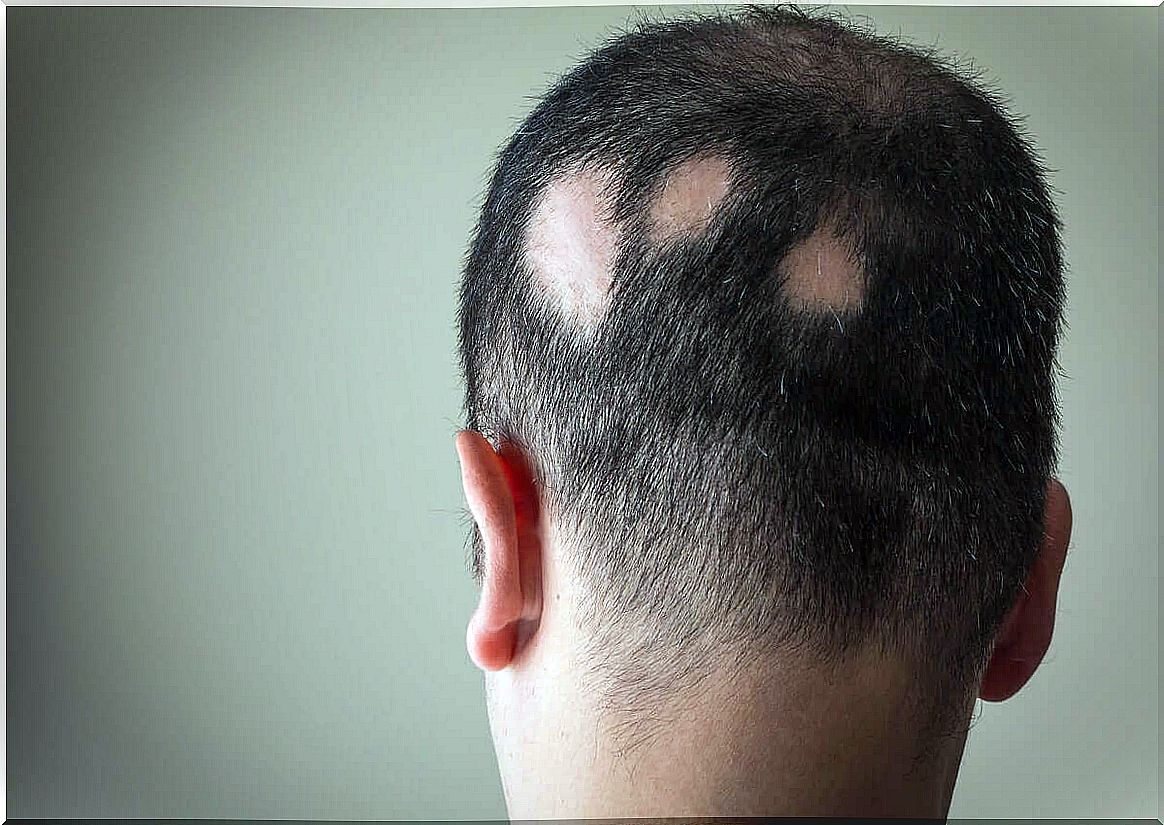Different Types Of Alopecia
Androgenetic alopecia is the most common form of hair loss and baldness. But there are other types of alopecia as well. Find out more about this topic today.

Alopecia is the medical name for complete hair loss. Scientific studies have made it possible to classify this pathology into different types, taking into account the rate of progression, diseases, family history and clinical criteria such as the extent, properties of the hair and the impairment of the skin.
Bibliographical revisions show that around 6 to 12 percent of women between the ages of 20 and 30 and around 55 percent of men over the age of 70 suffer from androgenetic alopecia (the most common variant). It is important to get to the bottom of the cause, because in part it is not just an aesthetic problem. A disease could also be hiding behind it.
Types of alopecia
There are many different types of alopecia, so it is impossible to speak of general patterns or symptoms. Although these species occur worldwide, there are also specific racial characteristics and different geographical distributions of certain types of alopecia.
Alopecia is complete hairlessness in parts of the body that are normally hairy. For a simpler diagnosis, experts basically differentiate between two large groups of alopecia:
- Non-scarring alopecia: Scars do not form on the scalp that is normal or healthy.
- Scarring (irreversible) alopecia: The hair follicles are damaged or destroyed, but the small scars cannot be seen with the naked eye.

Non-scarring alopecia
All the types that we will introduce to you below have in common that hair loss is not triggered by destroyed hair follicles and scarring. The hair follicles are not disturbed in this case, but experience changes.
Androgenetic alopecia
Androgenetic alopecia is the most common type. Various studies show that around 95 percent of those affected suffer from this form. As mentioned earlier, it affects about 55 percent of men and 10 percent of women.
Dermatology journals report two main causes leading to this:
- Androgens and skin: Masculine hormones (testosterone) cause hair follicles to shrink in certain areas of the scalp.
- Cell mechanism: In this case, it is a hereditary form of baldness. The activity of RNA polymerase, an enzyme essential for protein synthesis, is affected by certain genetic factors. This can change the patterns of hair growth.
There are various treatment options with different levels of evidence, such as minoxidil, melatonin, finasteride or laser therapy. Some of these drugs can show an efficiency of up to 90 percent, which means that no more hair falls out. However, the treatment of hair follicles is complicated.
Alopecia areata (circular hair loss)
Research shows that this type of hair loss, which manifests itself as circular bald spots, is a still very unknown pathology. Scientists believe that the following factors could be responsible for this:
- Genetic factors: In 40 percent of cases, circular hair loss is familial.
- Immunological factors: There is a connection between this pathology and immune disorders, such as thyroid diseases or vitiligo (white spot disease, destruction of the melanocytes of the skin). Scientists also found a link to diseases such as anemia, diabetes and rheumatoid arthritis.
- Factors such as stress, infections, and neurological changes can also be related.
Other non-scarring alopecias
We have described the two main types of non-scarring alopecia. But there are many other forms that we will not go into. We then briefly list a few examples:
- Traumatic alopecia: This occurs when the scalp is injured, for example by pulling or pressure (in the case of strict updos or braids).
- Diffuse alopecia: In this case, the hair loss is not limited to specific areas, the hair falls out over the head. This form can be acute or chronic.
- Hair loss due to vitamin deficiency, drugs or pharmaceuticals: Studies show that, for example, a vitamin D deficiency or too much vitamin A can lead to hair loss.
Scarring alopecia
Scientific articles show that scarring alopecia leads to permanent hair loss. The hair follicles are destroyed and permanent bald spots appear. This type occurs 3 percent of the time, which is a relatively small proportion.
Then we name various factors that can promote scarring alopecia:
- Physical causes: burns, frostbite and trauma, etc. When the hair follicles are destroyed, scars are created that prevent hair growth.
- Tumors: Any type of tumor that affects the skin (benign or malignant) can have a side effect of scarring alopecia.
- Infections: Diseases such as leprosy or skin tuberculosis permanently damage the skin and can therefore also lead to bald spots.
- Chronic inflammatory processes: Lupus erythematosus and other non-contagious diseases can also damage the skin and destroy the hair follicles.

Do not forget…
As mentioned, a distinction is made between scarring and non-scarring alopecia. The non-scarring forms are mostly related to genetic and hormonal factors, the scarring forms are often due to trauma or injuries that destroy the hair follicles.
The androgenetic alopecia is the most common form of this disease. It mostly occurs in middle-aged men. Fortunately, there are several treatment options available to help curb hair loss.









